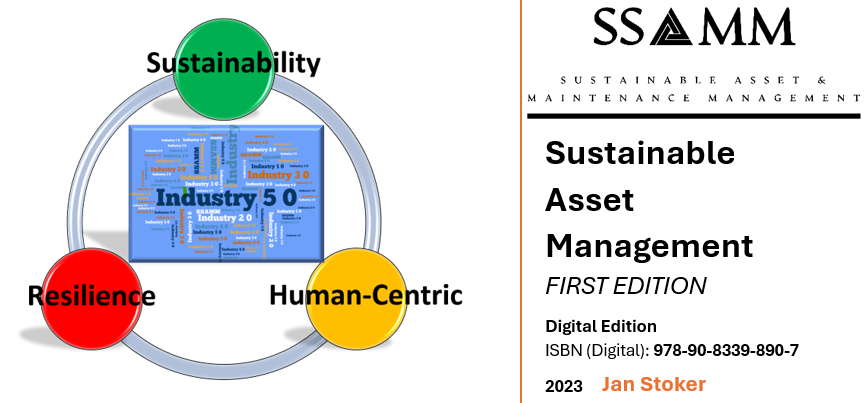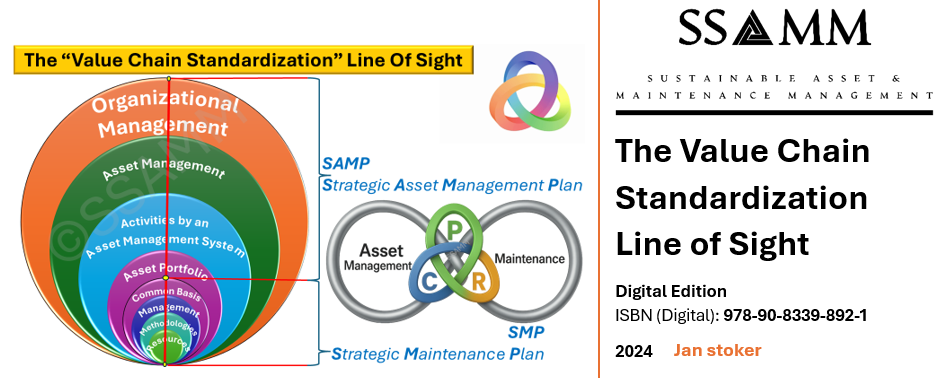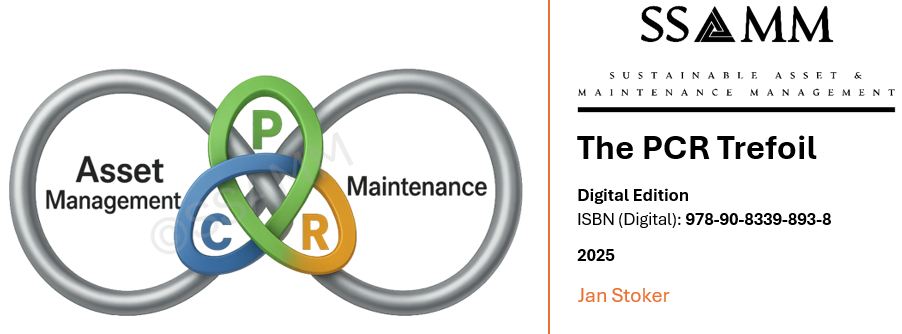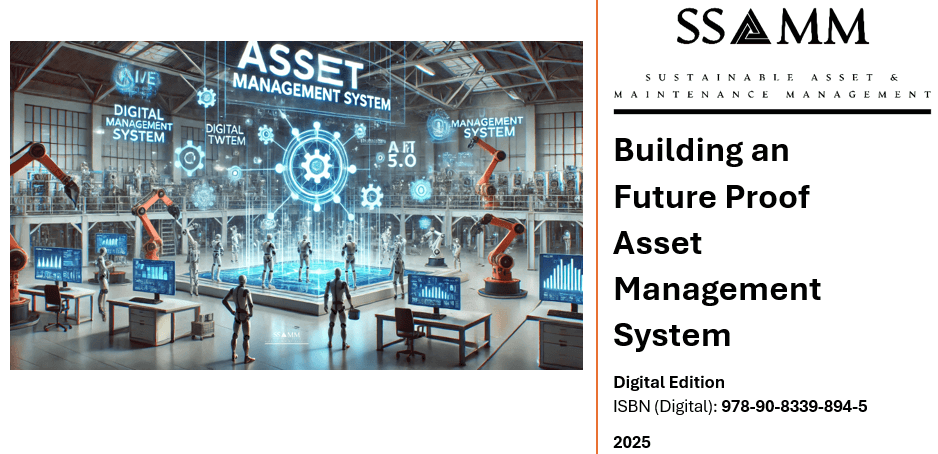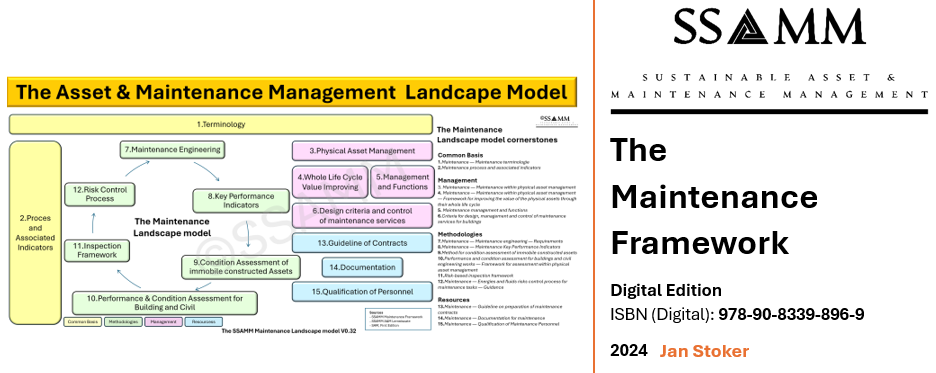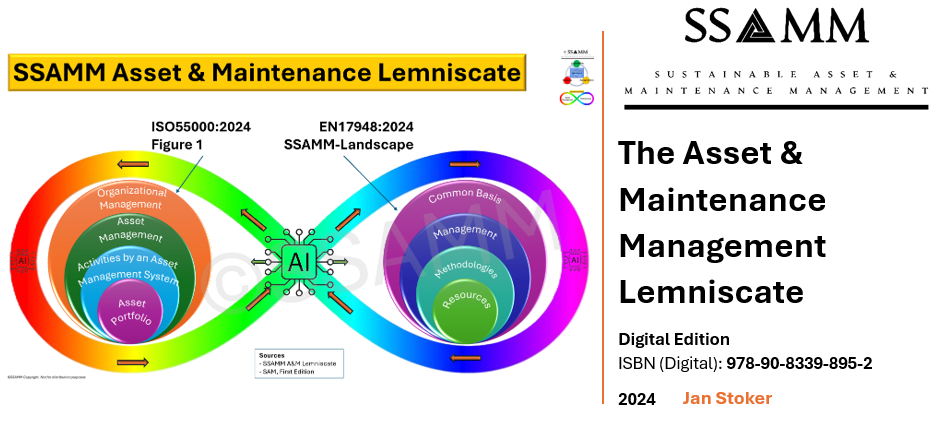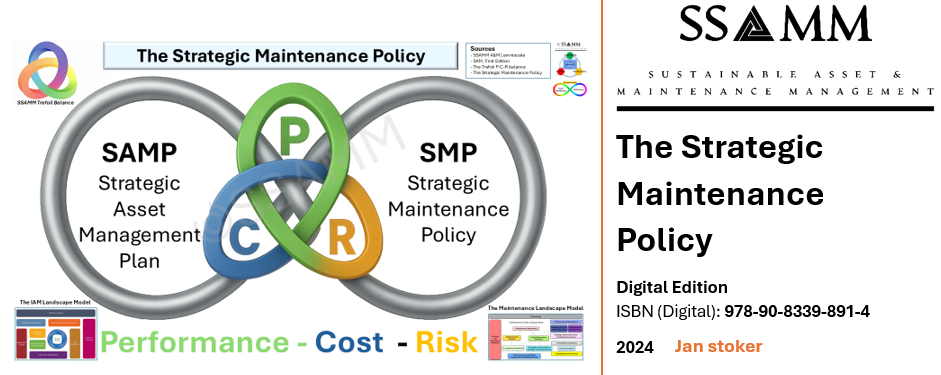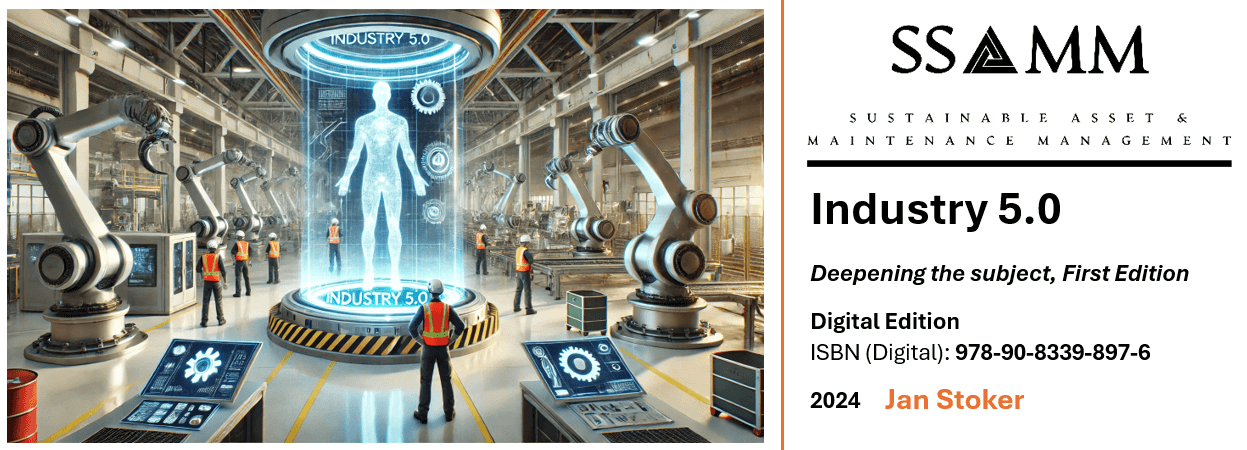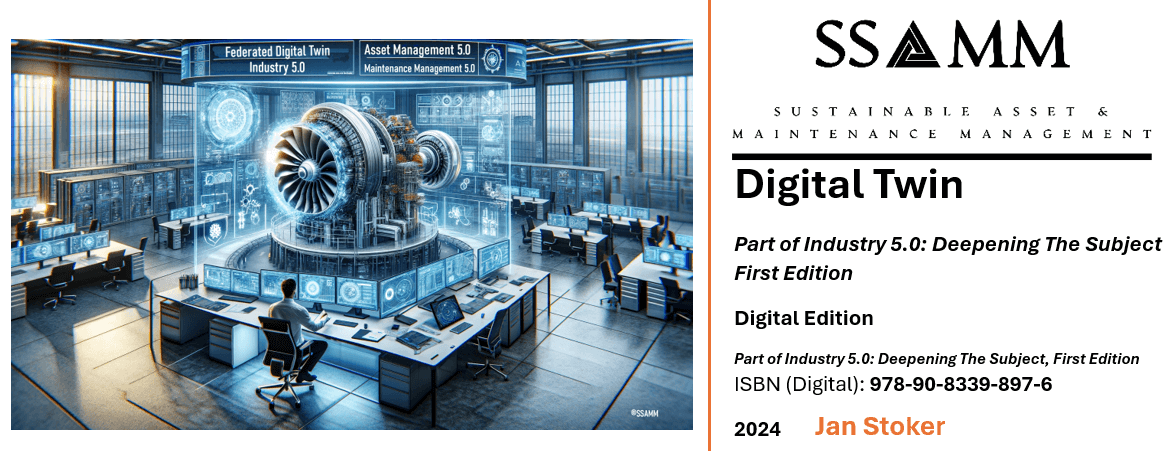Version 4 October 2023 Author: Jan Stoker
Introduction.
Digital Business Architecture Development (DBAD) is at the forefront of modern organizational transformation. In today’s rapidly evolving digital landscape, businesses must adapt and innovate to remain competitive. This entails not only embracing cutting-edge technologies but also reimagining the very foundations upon which their operations are built. Digital business architecture serves as the blueprint for this transformation, offering a structured approach to aligning technology, processes, and people to achieve strategic objectives. It encompasses a holistic view of an organization’s digital ecosystem, enabling it to streamline operations, enhance customer experiences, and drive growth in an increasingly interconnected and data-driven world. In this age of digital disruption, mastering the art of digital business architecture development is essential for organizations seeking to thrive and excel in the digital realm. This introduction explores the key principles and concepts behind this vital discipline, shedding light on its significance in shaping the future of business.
1. DBAD in a Ecosystem context
In an era where environmental sustainability has become an imperative, the integration of digital business architecture development takes on new significance. The convergence of digital innovation and eco-consciousness presents a unique opportunity for organizations to not only thrive in the digital age but also contribute positively to the planet’s well-being.
At its core, digital business architecture development within an eco context involves reimagining the way businesses operate, leveraging technology to reduce their ecological footprint while enhancing operational efficiency. This approach aligns seamlessly with the principles of sustainability and corporate responsibility, making it an essential strategy for modern enterprises.
One key aspect of this eco-centric approach is the optimization of resource utilization. Digital technologies, such as the Internet of Things (IoT), data analytics, and smart systems, enable businesses to monitor, control, and optimize their resource consumption in real-time. Whether it’s managing energy consumption, reducing water usage, or optimizing supply chains, digital business architecture development empowers organizations to make informed decisions that minimize waste and promote resource efficiency.
Additionally, digital business architecture development facilitates the adoption of renewable energy sources and green technologies. By seamlessly integrating sustainable practices into their operational models, organizations can not only reduce their carbon footprint but also generate cost savings over the long term. Whether it’s investing in solar power, implementing energy-efficient data centers, or embracing eco-friendly manufacturing processes, digital architecture enables these eco-conscious choices.
Furthermore, the integration of digital ecosystems and platforms promotes collaboration and information sharing among stakeholders, both within and outside the organization. This openness fosters transparency and accountability, enabling companies to track and report on their sustainability efforts accurately. Customers, investors, and partners increasingly demand such transparency, making it a critical aspect of modern business architecture.
In an eco context, digital business architecture development also plays a vital role in product innovation. It enables businesses to design and manufacture environmentally friendly products, reducing the environmental impact of their offerings. Moreover, it opens the door to new revenue streams through eco-friendly product lines, appealing to a growing market of environmentally conscious consumers.
In conclusion, digital business architecture development in an eco context represents a powerful approach for organizations to thrive in the digital age while simultaneously addressing the pressing challenges of environmental sustainability. It empowers businesses to become more resource-efficient, reduce their carbon footprint, and meet the demands of a socially and environmentally aware global market. As the world embraces a greener future, the integration of digital business architecture within an eco-conscious framework will be a defining factor in the success and longevity of enterprises across industries.
2. Defining an Digital Ecosystem
The concept of the Digital Business Ecosystem emerged in 2002, evolving from Moore’s (1996) idea of a “business ecosystem” by adding a digital dimension. This concept was further developed by the Directorate General Information Society of the European Commission. The Digital Business Ecosystem can be understood in three parts:
- Digital (ecosystem): This refers to the technical infrastructure, which is based on peer-to-peer (P2P) distributed software technology. It enables networked transactions and the distribution of digital objects within the infrastructure. These digital objects can include software applications, services, knowledge, taxonomies, folksonomies, ontologies, and more.
- Business (ecosystem): Defined by Moore (1996) as “An economic community supported by a foundation of interacting organizations and individuals—the ‘organisms of the business world’.” This ecosystem produces goods and services of value to customers, who are also members of the ecosystem. A healthy ecosystem maintains a balance between cooperation and competition in a dynamic free market.
- Ecosystem: This is a biological metaphor highlighting the interdependence of all actors in the business environment, who coevolve their capabilities and roles. In the context of Digital Business Ecosystems, this also includes an isomorphic model between biological behavior and software behavior, leading to an evolutionary, self-organizing, and self-optimizing environment.
The document also discusses the role of collective intelligence, achieved through tools for formalizing knowledge, and the importance of an evolutionary environment in the digital business ecosystem (Page 5).
This introduction provides a comprehensive overview of the digital business ecosystem, emphasizing its multifaceted nature that combines technical infrastructure, economic community, and a biological metaphor to describe the interdependence and coevolution of various entities within this environment.
2.1 Defining the ‘Ecosystem’.
An ecosystem, in the broadest sense, refers to a complex network or interconnected system. It is a term that can be applied in various contexts, from biology to business and technology. Here are a few definitions based on different contexts:
- Biological Ecosystem: In biology, an ecosystem is a community of living organisms (plants, animals, and microbes) in conjunction with the nonliving components of their environment (things like air, water, and mineral soil), interacting as a system. These biotic and abiotic components are linked together through nutrient cycles and energy flows. Ecosystems can be of any size, but usually, they form a specific, self-regulating unit.
- Business Ecosystem: In a business context, an ecosystem refers to a network of organizations – including suppliers, distributors, customers, competitors, government agencies, and so on – involved in the delivery of a specific product or service through both competition and cooperation. The idea is that each entity in the ecosystem affects and is affected by the others, creating a constantly evolving relationship in which each entity must be flexible and adaptable in order to survive, as in a biological ecosystem.
- Digital or Technological Ecosystem: In the digital or technological realm, an ecosystem often refers to a network of interconnected digital products and services, which can include hardware, software, platforms, and applications. These components work together to create a seamless user experience or to provide comprehensive solutions to various problems. For example, the Apple ecosystem includes hardware (like iPhones and MacBooks), software (iOS, macOS), services (iCloud, Apple Music), and applications that all work seamlessly together.
- Ecological Ecosystem: This is a broader term that encompasses both natural and human-made environments. It can refer to any system where there is interaction between organisms and their environment. This could include a forest, a desert, a coral reef, or even an urban area like a city, where various species interact with each other and with their physical environment.
In each of these contexts, the concept of an ecosystem involves complex interactions and interdependencies, whether they are among living organisms, business entities, or digital components.
2.2 Defining the Digital Ecosystem
A digital ecosystem refers to a complex network of interconnected digital technologies and entities that interact with each other, often creating a self-sustaining and evolving environment. This concept borrows from the biological term “ecosystem,” but applies it to the digital world. Here are some key aspects of a digital ecosystem:
- Interconnected Technologies: It includes various digital technologies such as software applications, platforms, databases, cloud services, and internet infrastructure. These components are interconnected, allowing for seamless data flow and integration.
- Stakeholders and Users: A digital ecosystem involves various stakeholders like businesses, consumers, service providers, and developers. Each plays a role in the ecosystem, contributing to and deriving value from it.
- Dynamic and Evolving Nature: Just like biological ecosystems, digital ecosystems are dynamic and constantly evolving. They adapt to changes in technology, market demands, and user behaviors.
- Value Creation and Exchange: In a digital ecosystem, value is created through the interaction of its components. This can include the development of new services, the enhancement of user experiences, and the generation of data-driven insights.
- Collaboration and Competition: Entities within a digital ecosystem often collaborate to offer comprehensive solutions and experiences to users. However, there can also be competition among different entities striving to establish their dominance or uniqueness in the ecosystem.
- Scalability and Flexibility: Digital ecosystems are typically scalable and flexible, allowing for the integration of new technologies and accommodating growing numbers of users and services.
- Examples: Examples of digital ecosystems include the Apple ecosystem (with its integration of hardware, software, and services like the iPhone, iOS, App Store, iCloud, etc.), Google’s ecosystem (encompassing Android, Google Search, Google Cloud, YouTube, etc.), and various business ecosystems built around cloud platforms like Amazon Web Services or Microsoft Azure.
In summary, a digital ecosystem is a networked, integrated, and constantly evolving space where various digital components, stakeholders, and technologies interact to create, deliver, and enhance services and experiences.
3. Digital Business Architecture Developpment
Here, we’ll explore some of the foundational elements and sources that have contributed to the development of DBAD:
Enterprise Architecture (EA): DBAD draws significant inspiration from the field of Enterprise Architecture. EA is a discipline that focuses on aligning an organization’s business processes, information, technology, and strategy to achieve its objectives. Frameworks like TOGAF (The Open Group Architecture Framework) and the Zachman Framework have been instrumental in structuring and organizing architectural elements within DBAD.
Business Process Management (BPM): BPM is the practice of analyzing, modeling, and optimizing business processes. It has greatly influenced DBAD by highlighting the importance of aligning digital initiatives with business processes to enhance efficiency and effectiveness.
Information Technology (IT) Architecture: Concepts from IT architecture, including software architecture and systems engineering, have contributed to the development of DBAD. These fields emphasize the design and integration of technology systems to support business objectives.
Data Management and Data Architecture: The rising importance of data in modern business operations has led to the inclusion of data management and data architecture as integral components of DBAD. Concepts from data governance, data modeling, and data analytics have significantly influenced DBAD practices.
Digital Transformation Initiatives: The digital transformation wave that has swept through industries worldwide has been a catalyst for the emergence of DBAD. As organizations sought to adapt and thrive in the digital age, DBAD evolved as a structured approach to align digital technologies with business strategies.
Industry Standards and Regulations: Various industries have developed specific standards and regulations related to digital business practices. Compliance with these standards has driven the adoption of DBAD in sectors such as finance, healthcare, and manufacturing.
Academic Research and Thought Leadership: Academic research in fields such as business architecture, enterprise architecture, and information systems has contributed to the theoretical foundations of DBAD. Scholars and thought leaders in these domains have explored the concepts and methodologies that underpin DBAD.
Consulting and Professional Services: Consulting firms, professional organizations, and industry associations have played a pivotal role in promoting and developing DBAD methodologies. They have provided guidance, best practices, and consulting services related to DBAD implementation.
It’s important to note that DBAD is a dynamic and adaptable approach that incorporates insights and best practices from various sources. As technology continues to advance and business environments evolve, DBAD will likely continue to evolve and integrate new influences to address the ever-changing needs of organizations in the digital era.
4. The Key Elements for Success in Digital Business Architecture Development
In the previous chapters, we explored the fundamental concepts and imperatives of Digital Business Architecture Development (DBAD) and why it’s essential in the digital transformation journey. In this chapter, we will delve deeper into the key elements that are vital for success in DBAD and how they contribute to the seamless digital transition of organizations.
4.1. Strategic Alignment:
At the core of DBAD is the alignment of digital initiatives with an organization’s strategic goals. Success begins with a clear understanding of what the organization aims to achieve in the digital age. This alignment ensures that every digital investment, process optimization, and technology adoption is purpose-driven and contributes directly to overarching business objectives.
4.2. Comprehensive Frameworks:
Successful DBAD relies on the use of comprehensive frameworks such as the Zachman Framework or TOGAF (The Open Group Architecture Framework). These frameworks provide a structured approach to developing digital architectures by addressing key aspects like business processes, data management, technology integration, and organizational structure. They serve as roadmaps for organizations, guiding them through the digital transition.
4.3. Data-Centric Approach:
Data is the lifeblood of the digital era, and organizations must adopt a data-centric approach. This involves establishing robust data architectures, governance models, and analytics capabilities. Successful DBAD leverages data to gain valuable insights, make informed decisions, and create personalized experiences for customers.
4.4. Customer-Centricity:
In the digital age, customer experience is paramount. Organizations must place customers at the center of their digital strategies. This involves understanding customer needs, preferences, and behaviors through data analysis. Successful DBAD incorporates customer-centricity into every aspect of the digital architecture, from user interface design to personalized marketing strategies.
4.5. Agility and Flexibility:
The digital landscape is characterized by rapid change and evolving technologies. Successful DBAD embraces agility and flexibility. It enables organizations to adapt quickly to changing market conditions, customer expectations, and emerging technologies. This flexibility allows for experimentation, learning, and continuous improvement.
4.6. Technology Stack Selection:
Choosing the right technology stack is a critical element of DBAD. Success hinges on selecting technologies that align with the organization’s goals and are capable of supporting its business processes effectively. Factors like scalability, compatibility, security, and ease of integration play a crucial role in technology stack selection.
4.7. Change Management:
The human element is often the most challenging aspect of digital transformation. Successful DBAD recognizes the importance of change management. It involves communicating the digital vision, involving employees in the transition, providing training and support, and fostering a culture of innovation and adaptability.
4.8. Security and Compliance:
With digitalization comes increased security risks and regulatory requirements. Successful DBAD prioritizes cybersecurity by implementing robust security measures and ensuring compliance with industry regulations. Data protection and risk mitigation are fundamental to a secure digital architecture.
4.9. Continuous Monitoring and Optimization:
Digital transformation is an ongoing journey. Successful DBAD involves continuous monitoring of digital initiatives and architectures. Key performance indicators (KPIs) are used to measure progress, and feedback loops are established to identify areas for improvement. This iterative approach ensures that the digital architecture remains aligned with evolving business needs and technological advancements.
Wrap-Up
Digital Business Architecture Development is the compass that guides organizations through the digital transition. Success in DBAD hinges on strategic alignment, comprehensive frameworks, a data-centric and customer-centric approach, agility, technology stack selection, change management, security, and continuous improvement. By embracing these key elements, organizations can navigate the complex digital landscape with confidence, harnessing the full potential of technology to achieve their business goals and thrive in the digital age. In the chapters that follow, we will delve deeper into each of these elements, providing practical insights and best practices for successful DBAD implementation.
5. Digital Business Architecture Developmen in the field of Asset & Maintenance Management
In the pursuit of operational excellence and effective Asset & Maintenance Management, organizations are increasingly recognizing the importance of embracing Digital Business Architecture Development (DBAD). This chapter focuses on why DBAD is essential in the context of Asset & Maintenance Management as defined in ISO 55000, and it provides a roadmap for executing DBAD within an Asset & Maintenance management organization.
5.1 Why DBAD for Asset & Maintenance Management in ISO 55000?
Asset & Maintenance Management, as per ISO 55000, is a strategic discipline that emphasizes the management of physical assets throughout their lifecycle. ISO 55000 defines a framework that helps organizations optimize asset performance, mitigate risks, ensure compliance, and ultimately achieve operational excellence. So, why is DBAD crucial in this context?
- Alignment with Business Objectives:
- DBAD ensures that digital initiatives in Asset & Maintenance Management align with broader organizational objectives. This alignment is fundamental for optimizing asset performance in a way that supports strategic goals.
- Data-Driven Decision Making:
- ISO 55000 emphasizes data and information management. DBAD incorporates data architecture and analytics capabilities, enabling organizations to leverage data insights for more informed and predictive decision-making in maintenance and asset optimization.
- Efficiency and Performance Optimization:
- Asset & Maintenance Management aims to maximize asset efficiency and performance. DBAD supports these goals by streamlining maintenance workflows, implementing predictive maintenance strategies, and optimizing asset usage through digital technologies.
- Compliance and Risk Mitigation:
- ISO 55000 underscores compliance with regulations and risk management. DBAD ensures that digital systems in Asset & Maintenance Management adhere to industry standards and compliance requirements, reducing the risk of non-compliance and financial penalties.
- Continuous Improvement:
- Both ISO 55000 and DBAD encourage a culture of continuous improvement. DBAD enables organizations to continuously monitor asset performance, assess adherence to standards, and identify areas for enhancement, thereby facilitating ongoing optimization.
5.2 Roadmap for DBAD Execution in Asset & Maintenance Management
Implementing DBAD in Asset & Maintenance Management is a multi-faceted endeavor that involves several stages. Here’s a roadmap to guide organizations through this process:
Stage 1: Understanding the Current State
- Assessment: Conduct a comprehensive assessment of the current Asset & Maintenance Management processes, systems, and technologies.
- Gap Analysis: Identify gaps between existing practices and ISO 55000 compliance requirements, as well as opportunities for digital transformation.
Stage 2: Define Objectives and Strategies
- Strategic Alignment: Clearly define how Asset & Maintenance Management objectives align with broader organizational strategies and goals.
- Technology Alignment: Determine which digital technologies and tools are most suitable for achieving Asset & Maintenance Management objectives.
Stage 3: Develop Digital Architectures
- Data Architecture: Design a robust data architecture that includes data collection, storage, governance, and analytics components to support data-driven decisions.
- Technology Stack: Select and implement the appropriate digital technology stack, including maintenance management software, IoT sensors, and data analytics tools.
Stage 4: Implementation and Integration
- Process Optimization: Streamline maintenance workflows and processes using digital technologies such as predictive maintenance, condition monitoring, and asset performance management.
- Integration: Ensure seamless integration of digital systems with existing Asset & Maintenance Management processes and systems.
Stage 5: Compliance and Risk Management
- Compliance Framework: Develop and implement a compliance framework that aligns with ISO 55000 standards and industry regulations.
- Risk Mitigation: Establish risk mitigation strategies, particularly in areas such as data security, to minimize potential risks associated with digital transformation.
Stage 6: Monitoring and Continuous Improvement
- Performance Metrics: Define key performance indicators (KPIs) and establish a monitoring framework to assess the performance of digital initiatives.
- Feedback Loops: Implement feedback mechanisms to gather insights from maintenance and asset management teams for continuous improvement.
Stage 7: Training and Change Management
- Training Programs: Provide training and upskilling opportunities to ensure that employees are proficient in using digital tools and adapting to new processes.
- Change Management: Implement a change management strategy to manage organizational culture shifts and ensure buy-in from stakeholders.
Stage 8: Evaluation and Iteration
- Periodic Review: Conduct regular reviews and evaluations to assess the effectiveness of DBAD in Asset & Maintenance Management and identify areas for refinement.
- Continuous Iteration: Iterate and adjust the DBAD strategy based on lessons learned and changing business needs.
Conclusion
Digital Business Architecture Development is a transformative approach that empowers organizations to enhance their Asset & Maintenance Management practices in alignment with ISO 55000. By following this roadmap, organizations can systematically implement DBAD, optimize asset performance, mitigate risks, and achieve operational excellence. This strategic approach not only improves the management of physical assets but also ensures that organizations remain competitive and compliant in today’s ever-evolving business landscape. In the chapters that follow, we will delve deeper into each stage of the roadmap, providing practical insights and best practices for successful DBAD execution in Asset & Maintenance Management.

